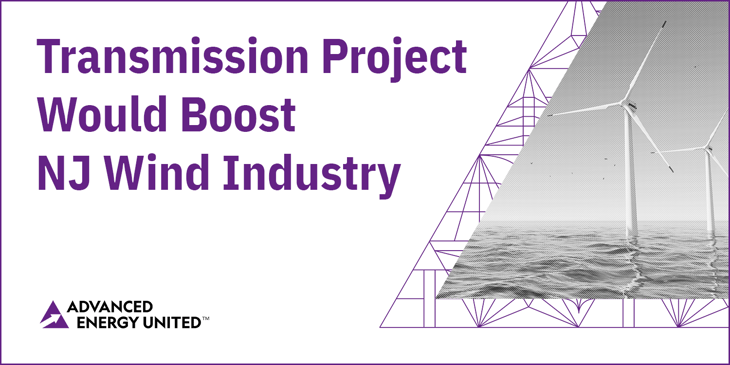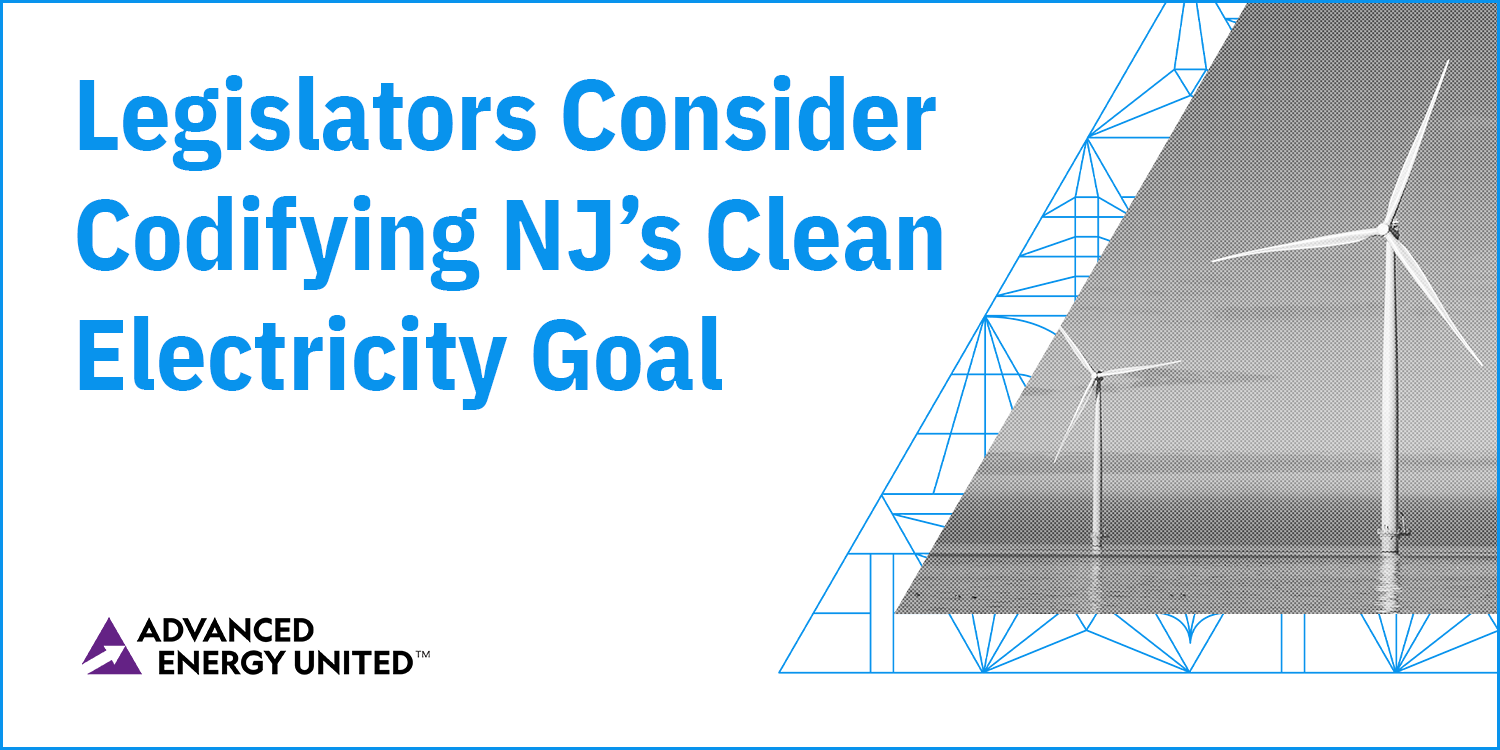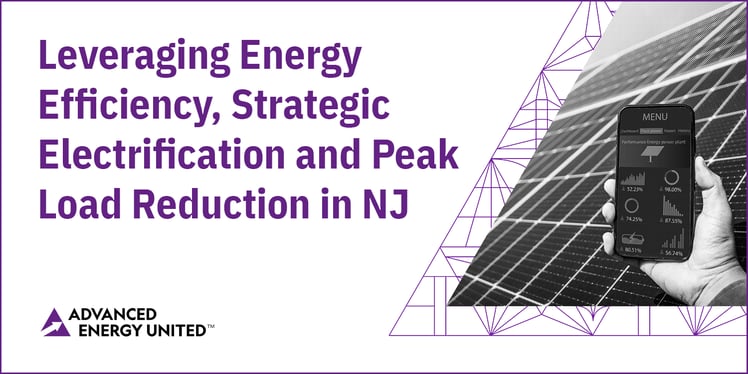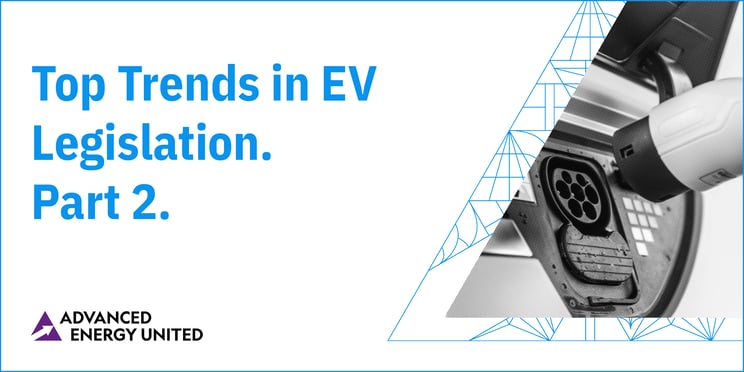
The New Jersey Board of Public Utilities held a public stakeholder meeting this week where Advanced Energy United and key allies spoke in favor of opening a prebuild infrastructure solicitation to support the development of offshore wind projects.
The transmission project would allow 3,742 MW of offshore wind power to connect to the grid, supporting up to four different wind projects.
Read More
Topics:
Regulatory,
Transmission,
Offshore Wind,
New Jersey

In a rare joint session of the Senate’s Environment and Energy Committee and the Assembly’s Telecommunications and Utilities Committees last week, the future of New Jersey’s energy portfolio was debated.
Read More
Topics:
New Jersey,
Clean Electricity
 How quickly and efficiently New Jersey can transition to a 100% clean energy future depends in no small part on how the state’s utilities implement energy efficiency and demand management guidance recently issued by New Jersey’s Board of Public Utilities (BPU). At the end of July, the BPU voted 4-0 to approve an Order that largely implements Staff’s Straw Proposals on the 2nd Triennium of Energy Efficiency and Peak Demand Reduction Programs (Triennium 2), an every-three-year regulatory proceeding that defines the scope of utility demand side management programs. Triennium 2 has the potential to foster economic development in New Jersey, increase grid reliability and flexibility, and lower utility bills for residents by leveraging advanced energy technologies and services. However, the promise of these programs is in the hands of the state’s utilities. The NJ BPU designed Triennium 2 in a way that provides utilities with significant leeway to determine how aggressively and ambitiously to implement these programs. To maximize the guidance in this Order, utilities should make significant investments in the three areas covered by Triennium 2: electricity reduction measures, building decarbonization programs, and peak load demand-response initiatives.
How quickly and efficiently New Jersey can transition to a 100% clean energy future depends in no small part on how the state’s utilities implement energy efficiency and demand management guidance recently issued by New Jersey’s Board of Public Utilities (BPU). At the end of July, the BPU voted 4-0 to approve an Order that largely implements Staff’s Straw Proposals on the 2nd Triennium of Energy Efficiency and Peak Demand Reduction Programs (Triennium 2), an every-three-year regulatory proceeding that defines the scope of utility demand side management programs. Triennium 2 has the potential to foster economic development in New Jersey, increase grid reliability and flexibility, and lower utility bills for residents by leveraging advanced energy technologies and services. However, the promise of these programs is in the hands of the state’s utilities. The NJ BPU designed Triennium 2 in a way that provides utilities with significant leeway to determine how aggressively and ambitiously to implement these programs. To maximize the guidance in this Order, utilities should make significant investments in the three areas covered by Triennium 2: electricity reduction measures, building decarbonization programs, and peak load demand-response initiatives.
Read More
Topics:
Regulatory,
Energy Efficiency,
New Jersey

In our previous post, Charging toward the EV transition. Part 1. we covered the first three trends in EV legislation—looking back at 2022.
Read More
Topics:
Advanced Transportation,
Indiana,
California,
Missouri,
Vermont,
Maryland,
Connecticut,
New Jersey,
West Virginia,
Hawaii,
Louisiana,
New York

Since the start of this year’s legislative sessions, Advanced Energy Economy has been tracking energy legislation across all 50 states, the District of Columbia, and the U.S. Congress through its online PowerSuite platform. PowerSuite provides policy tracking by policy professionals. In the process, we have identified several trends in how states are contemplating the future of their energy, transportation, and building sectors. The bills described in this post, which range from simply introduced to fully signed into law, by no means represent every bill in the country filed this year, but are rather indicative of the attention being devoted to each topic by lawmakers. What follows represents the top 10 state energy legislative issues of 2022.
Read More
Topics:
State Policy,
Advanced Transportation,
Virginia,
Arizona,
Pennsylvania,
Indiana,
California,
Massachusetts,
Maine,
Nebraska,
Tennessee,
Maryland,
Wyoming,
Connecticut,
New Jersey,
West Virginia,
Idaho,
Washington,
Hawaii,
Louisiana,
Minnesota,
New Hampshire,
South Dakota,
New York,
New Mexico,
Florida,
Illinois




